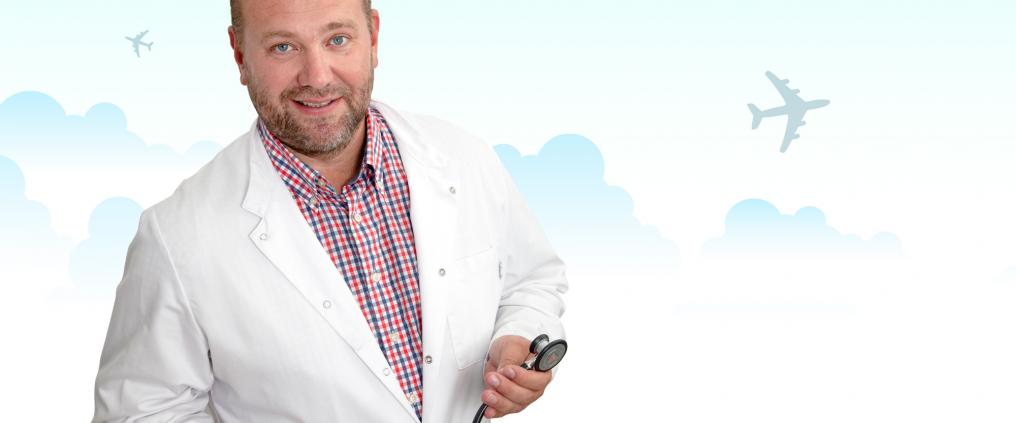This question is on many people’s mind at the moment. Often, common sense provides the answer.
I wouldn’t fly if I had a high fever, at least not without consulting my doctor first. Travel insurance often covers the cost of a cancelled trip if you have a medical certificate of your illness.
Ultimately, it’s the captain who decides who is allowed to board the plane. Passengers who clearly suffer from a high fever are considered carefully.
Travelling with a fever is a risk in areas with high chances of infection, such as Asia, where travellers’ temperature may be taken as soon as they arrive. Explaining your state of health to local authorities doesn’t sound like an ideal way to start a holiday!
If you have a cold but not a fever, you can fly, but it is, of course, polite to take other passengers into consideration. Even so, viral infections don’t spread as easily in the cabin as many might think. While air is re-circulated for use by several rows of seats, it is filtered effectively on every pass.
Use the appropriate remedies
For a stuffy nose, xylometazoline products are available without a prescription. Nasal sprays or drops should be used about half an hour before landing – roughly an hour before the scheduled arrival time.
More efficient products, which constrict the blood vessels in the lining of the nose, are available with a prescription.
The ears suffer most when you fly with a cold
A cold makes the lining of the ear canal swell. This swelling disturbs the pressure-equalisation system of the ear as the cabin pressure fluctuates during take-off and landing. At cruising altitude, the cabin air pressure is equivalent to air pressure at approximately 2,500 metres above sea level.
People seldom get an earache during take-off, when the air pressure in the cabin drops. This is easier on the pressure-equalisation system of the middle ear, and pressure can usually be equalised with the aid of chewing gum, swallowing and fake yawns.
During landing, the pressure rises, but relief can be found with the Valsalva manoeuvre. This is a simple technique: inhale until your lungs are full, close your mouth, and pinch your nose. Then blow the air at full force, which sends it toward the back of your throat, equalising the pressure. The stuffy feeling goes away, and you can hear properly again. Perform the manoeuvre every few minutes for the duration of the landing.
Children may have trouble learning this technique, but flight attendants can provide a solution in the form of ‘Mickey Mouse ears’ – plastic cups that are placed over the ears, with a damp paper towel at the bottom.
About the author
Aviation doctor Janne Lepola, AME 1, is the director of the aviation medical centre at the Aava Vantaanportti clinic. He has been interested in aviation his entire life, and as a young man he even planned to pursue a career as a fighter pilot. After qualifying as a doctor, Lepola was employed as a locum physician at the Finnish Air Force Academy, and in 1995 he qualified as an aviation doctor. He also holds qualifications in occupational health care and radiation, marine, and military medicine.
Aava Vantaanportti is an aviation medicine centre authorised by the Finnish Transport Safety Agency, Trafi. Among its responsibilities are the initial and periodic health examinations of pilots, air traffic controllers, and cabin crew. It is part of Lääkärikeskus Aava, a family-owned Finnish medical centre.
Pharmacy, Helsinki Airport, Arrivals Hall 2A
Pharmacy's service point, Helsinki Airport, Gate 27
